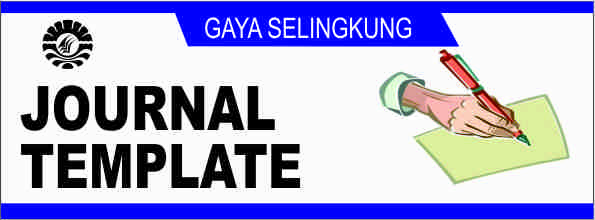The Effectiveness of Interpersonal Communication on Employees at Vocational High School YPLP PGRI 1 Makassar
(1) Universitas Negeri Makassar
(2) Universitas Negeri Makassar
(3) Universitas Negeri Makassar
(*) Corresponding Author
DOI: https://doi.org/10.26858/jo.v6i1.14734
Abstract
As human social beings in everyday life always want to relate to other humans. He wants to know the surrounding environment, even wants to know what is happening in him. This curiosity forces humans to communicate. This study aims to determine the effectiveness of interpersonal communication among employees at Vocational High School YPLP PGRI 1 Makassar. Therefore, to achieve these objectives researchers used data collection techniques with observation, questionnaires, interviews, and documentation with a population of 24 people. And the data is processed using the quantitative descriptive analysis to determine the extent of the effectiveness of interpersonal communication among employees at the Vocational High School YPLP PGRI 1 Makassar. The results of this study indicate that the Effectiveness of Interpersonal Communication among Vocational High School YPLP PGRI 1 Makassar staff with indicators namely: openness with a percentage reaching 90.83 percent, empathy with a percentage reaching 90.56 percent, supportiveness with a percentage of 83.13 percent, positiveness with a percentage reaching 89.44 percent and equality with a percentage reaching 92.08 percent of all the indicators are in the very good category. This is demonstrated through overall data analysis which shows the percentage reached 89.08 percent, the value is in line with related observations made by researchers in the field.
Keywords
Full Text:
pdfReferences
Akcay, C., & Akyol, B. (2012). Self Actualization Needs and Education of Participants in Lifelong Education Centers. Procedia - Social and Behavioral Sciences, 46, 3456–3459. https://doi.org/https://doi.org/10.1016/j.sbspro.2012.06.084
Akçay, C., & Akyol, B. (2014). Self-actualization Levels of Participants in Lifelong Education Centers. Procedia - Social and Behavioral Sciences, 116, 1577–1580. https://doi.org/https://doi.org/10.1016/j.sbspro.2014.01.437
Arhas, S. H. (2018). Metode Pembelajaran Black Knight. Apa? Mengapa? dan Bagaimana? Jurnal Ad’ministrare, 5(2), 165–172.
Arulchelvan, S., & Elangovan, R. (2017). Effective Communication Aproaches in Tuberculosis control: Health Workers’ Perceptions and Experiences. Indian Journal of Tuberculosis, 64(4), 318–322. https://doi.org/https://doi.org/10.1016/j.ijtb.2016.11.017
Brouwer, J., Downey, C., & Bokhove, C. (2020). The development of communication networks of pre-service teachers on a school-led and university-led programme of initial teacher education in England. International Journal of Educational Research, 100, 101542. https://doi.org/https://doi.org/10.1016/j.ijer.2020.101542
Ferris, G. R., Perrewé, P. L., Ranft, A. L., Zinko, R., Stoner, J. S., Brouer, R. L., & Laird, M. D. (2007). Human Resources Reputation and Effectiveness. Human Resource Management Review, 17(2), 117–130. https://doi.org/https://doi.org/10.1016/j.hrmr.2007.03.003
Gewirth, A. (2009). Self-fulfillment. In Self-Fulfillment. https://doi.org/10.2307/2693627
Hillemeier, M. M., Gusic, M., & Bai, Y. (2006). Communication and Education About Asthma in Rural and Urban Schools. Ambulatory Pediatrics, 6(4), 198–203. https://doi.org/https://doi.org/10.1016/j.ambp.2006.04.004
Hung, K.-P., & Lin, C.-K. (2013). More Communication is not always Better? The Interplay between Effective Communication and Interpersonal Conflict in Influencing Satisfaction. Industrial Marketing Management, 42(8), 1223–1232. https://doi.org/https://doi.org/10.1016/j.indmarman.2013.05.002
Kala, K., Bolia, N. B., & Sushil. (2020). Waste management communication policy for effective citizen awareness. Journal of Policy Modeling, 42(3), 661–678. https://doi.org/https://doi.org/10.1016/j.jpolmod.2020.01.012
Kazakovs, M., Verdina, A., & Arhipova, I. (2015). Automation of Human Resources Development Planning. Procedia Computer Science, 77, 234–239. https://doi.org/https://doi.org/10.1016/j.procs.2015.12.379
Lee, K. R., & Kim, E. J. (2020). Relationship between Interprofessional Communication and Team Task Performance. Clinical Simulation in Nursing, 43, 44–50. https://doi.org/https://doi.org/10.1016/j.ecns.2020.02.002
Mitrofan, N., & Bulborea, A. (2013). The Role of Organizational Communication in Structuring Interpersonal Relationships. Procedia - Social and Behavioral Sciences, 76, 511–515. https://doi.org/https://doi.org/10.1016/j.sbspro.2013.04.155
Mozahem, N. A., & Adlouni, R. O. (2020). Using Entrepreneurial Self-Efficacy as an Indirect Measure of Entrepreneurial Education. The International Journal of Management Education, 100385. https://doi.org/https://doi.org/10.1016/j.ijme.2020.100385
Nasrullah, N. (2017). Communication Strategies Employed by the Fourth Semester Students of English Department of State University of Makassar. Jurnal Ad’ministrare: Jurnal Pemikiran Ilmiah Dan Pendidikan Administrasi Perkantoran, 4(2), 83–96.
Niswaty, R., & Arhas, S. H. (2019). The Effect of Learning Media on Progress Quality in Office Administration Program in Vocational School Negeri 1 Watampone Bone Regency. Journal of Physics: Conference Series, 1387. https://doi.org/10.1088/1742-6596/1387/1/012042
Sinambela, L. P. (2016). Manajemen Sumber Daya Manusia, Membangun Tim Kerja yang Solid untuk Meningkatkan Kinerja.
Sugiyono. (2012). Metode Penelitian Administrasi Dilengkapi dengan Metode R&D. In Bandung: Alfabeta. https://doi.org/10.1007/s11116-011-9347-8
Suharsimi, A. (2013). Prosedur Penelitian : Suatu Pendekatan Praktik (Edisi Revisi). Jakarta: Rineka Cipta. https://doi.org/10.1017/CBO9781107415324.004
Syaekhu, A. (2018). Effect of Personality and Interpersonal Communication on Organizational Commitment. Jurnal Ilmiah Ilmu Administrasi Publik, 8(1), 61–68.
Article Metrics
Abstract view : 649 times | pdf view : 103 timesRefbacks
- There are currently no refbacks.
Copyright (c) 2020 Nurul Sazwani, Jamaluddin Jamaluddin, Risma Niswaty

This work is licensed under a Creative Commons Attribution 4.0 International License.






























 under a
under a